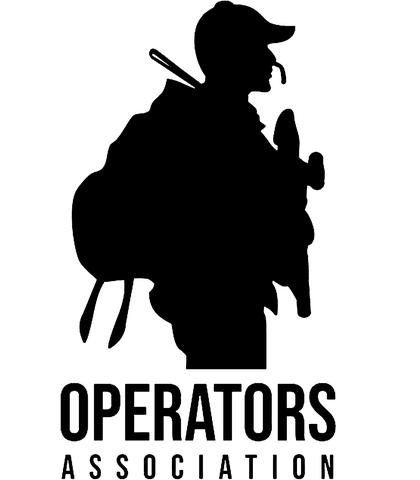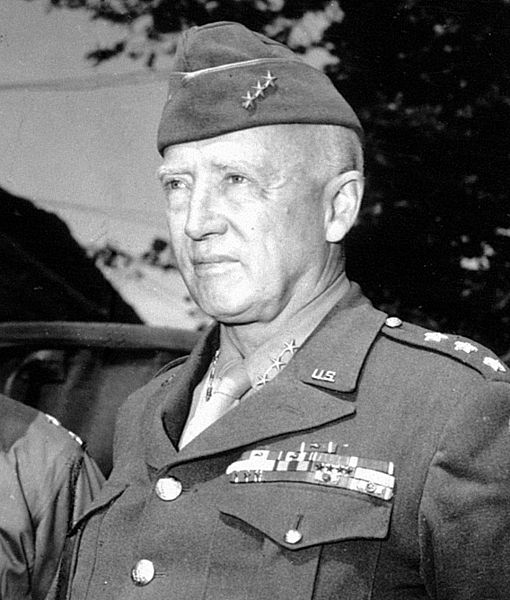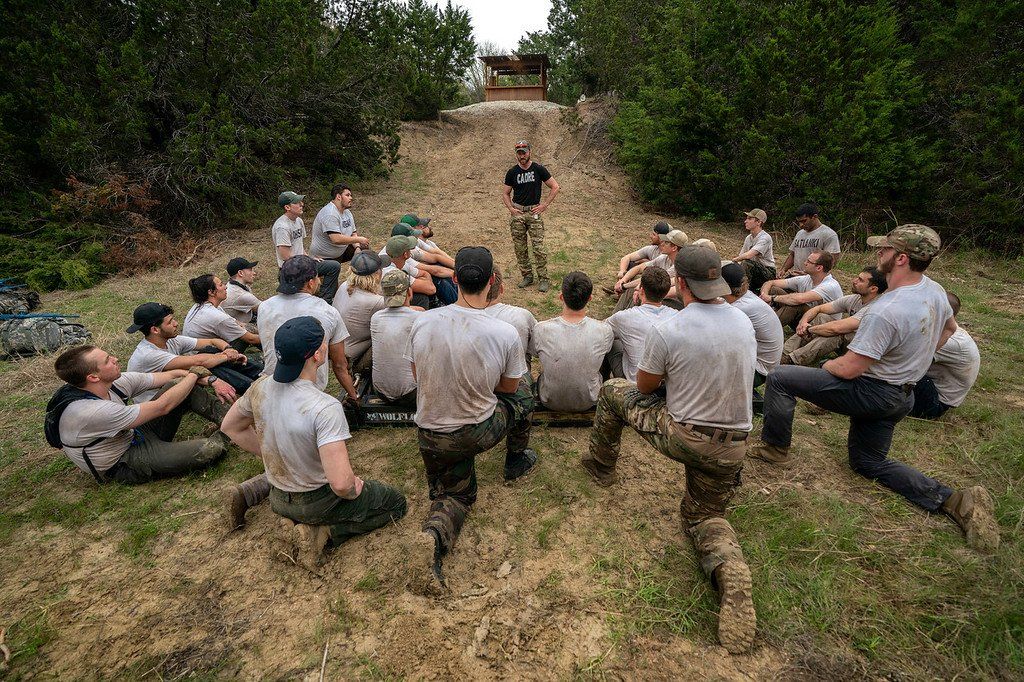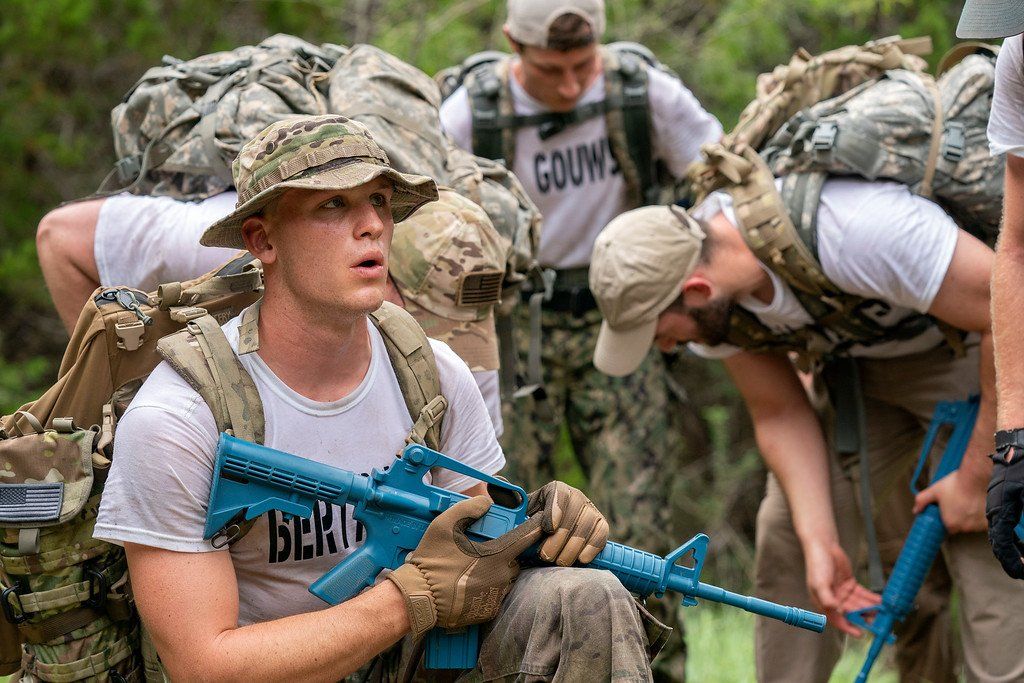
October 27, 2021
As a leader, you are responsible for your team’s success. You will be praised when your team triumphs but also held accountable when it fails. A large part of leadership is individual and introspective. But it’s your actions that determine whether you succeed or fail. From communicating effectively to developing plans, a leader must have the ability to influence and manage those around him. We’ve released a lot of OA leadership guides in the past, showing you how to direct your people and lead your teams to success. But we’ve never shown you how to actually build a team. That’s what this guide is all about – finding the right people for the job and assembling them into a cohesive unit. Step 1: Understand Your Mission Before you can start assembling your team, you must understand the nature of your objective. Only when you have a clear vision of your task can you select the right people to join your tribe. Understanding your mission isn’t the same thing as making a plan. When assembling a team, you don’t need to have an exact idea of how you will accomplish your objective. But you need an accurate concept of what your goal is, and the general tasks your mission will require (eg. if you’re capturing an enemy compound, you don’t need a fleshed-out game plan. But you should reasonably expect to encounter resistance) . Step 2: Determine Your Leadership Style Once you know the nature of your mission, you must determine what kind of leader you’ll be. By this, we mean determining which type of leadership style is best suited to accomplishing the objective. In general, the more disorderly and chaotic the task, the more autocratic and strict you must be as a leader. Conversely, if your mission is well-defined and relatively calm, you can be more collaborative and friendly in your approach. Why is it crucial to determine your leadership style when selecting a team, you ask? Because how you plan on managing your mission makes a direct impact on the types of people you’ll choose for your squad. The details and nuances behind determining your leadership style can get complicated. That’s why we created an entire OA guide to help you out! Click this link to read about The 7 Styles of Leadership and find out which you should use. Step 3: Assemble Your “Special Forces” You understand your mission and how to conduct yourself as a leader. Now, It’s finally time to assemble your team. When it comes down to picking the ideal individuals for your squad, don’t think of it as choosing teammates – think of it as selecting your personal special forces unit. What do we mean by this? Your people must have the same three characteristics as a SOF operator: Specialized: Special forces operators aren’t jacks of all trades. They have a job, and they’re deadly at what they do. Snipers are experts at sniping, combat engineers are experts at combat engineering, and medics are experts at field medicine. Your people must be the same way. Look at your mission and determine the key skills you’ll need to accomplish the objective. If you need someone good with computers, pick the most specialized expert you can find. Capable: Knowledge doesn’t mean anything if you can’t apply it. The same goes for your teammates. Picking capable people means choosing individuals who have what it takes to execute under pressure, overcome obstacles, and persevere through difficulty. Adaptable: Adaptability is the most crucial aspect of choosing the right people for your squad. If your teammates can't think outside the box and adapt to changing situations, they’ll be next to useless on a mission. Operations rarely ever go to plan. Somewhere along the way, you’re bound to run into some unexpected obstacle. When that happens, your people must be intelligent, confident, and skilled enough to improvise and adapt to the new scenario. One-dimensional people will cause your mission to fail. If you want to achieve your SOF goals, you must find your tribe. You must find a group of people who will push you to improve and perform day in, day out. Unfortunately, it can be nearly impossible to find the right team of motivated people. That’s why we created the Operators Association. When you become an Aspiring Operator, you get instant access to our community of hundreds of driven future, current, and former SOF operators who will guide you on the path. You also get many other perks like exclusive OA podcasts, a weekly accountability group with special forces cadre, and complimentary invites to Operators Association events! Click here to join OA now .
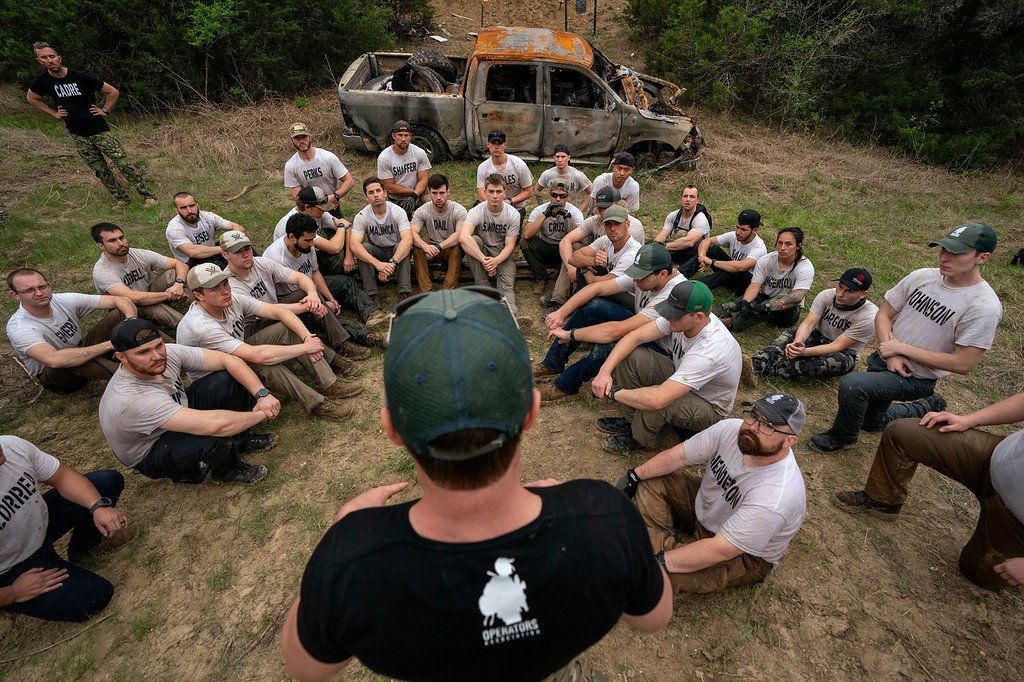
October 20, 2021
You’ve gathered intel, developed a strategy, and planned an operation. Now, it’s time to execute. But before you can do that, you must get your teammates on board with the plan. It’s time to give a mission briefing. Unfortunately, that’s easier said than done. The vast majority of people, SOF operators included, don’t know the first thing about making an impactful and effective mission briefing. So, in this OA leadership guide, we’ll give you three principles for creating memorable, functional presentations – whether you’re introducing next year’s business budget or planning a direct action mission. Understanding Primacy and Recency If we gave you 20 seconds to memorize a list of 15 words, which words would you remember, and how well could you recall them? When psychologists did this experiment in the 1960s, they discovered the Primacy and Recency Effect. They found that individuals were best able to remember the first few words (primacy) and last few words (recency) on the list – usually forgetting the ones in the middle. That’s because the human brain is most effective at remembering things that happened first (which is why first impressions matter) and things that occurred most recently. In other words, when you’re giving a briefing, people will most vividly remember and comprehend the beginning and end of your presentation, not the middle. Despite this, most people have been programmed by formalized education in high schools and colleges to put key points in the “body” of their presentations and essays. The result is a forgettable and easy to misconstrue product. While this might be an inconsequential error in English class, ensuring that your briefings are understood clearly can make the difference between life and death. Overcoming the Primacy and Recency Effect It’s impractical to immediately start bombarding your audience with information at the beginning of your briefing. So how can you ensure that people remember the middle of your presentation just as well as they do the beginning and end? The solution is repetition and emphasis. Don’t structure your briefing as Beginning >> Middle >> End. Instead, set it up using the IODC Method (Introduction >> Overview >> Detail >> Conclusion): Introduction/Beginning : What is the mission, who is involved, when is it happening, where is the target, why are we attacking/capturing/securing that target? Middle Overview : Introduce the easily forgettable middle points of your briefing. Don’t go into detail. Just give your audience an idea of where their attention should be oriented. (Optional) : If your briefing has been going on for over 25 mins, take a 5-minute recess. Have your people stretch their legs and move around for a bit to recharge their attention span. Detail : Delve into the details of your middle points. With your audience primed to listen to this key information, it will be much more memorable. Conclusion : Restate the main points from your introduction and middle. This is also the time for your audience to ask questions and for you to ask questions to ensure they understand the mission. Presentation Rules When it comes to effectively presenting information, confidence and common sense can get you pretty far. But here are a few more technical rules for creating a briefing that your audience will remember. Your briefing should only take ⅔ of your total allotted meeting time. For example, if you have 30 mins to give your briefing, the presentation portion should only take 20 mins. The remaining time is for questions, concerns, and rehearsing the game plan with your team. Visual aids are an excellent way to help people comprehend your mission plan. But you must use the right visual aid for your audience. In general, whiteboards or chalkboards are appropriate for groups of less than 30 people. Any more than that, and you’ll want to use digital presentation software like Powerpoint or Keynote (bigger font sizes, higher contrast, and easier to see than a board). If you don’t have access to presentation hardware like a projector, print out your slides and hand them out as notes for the presentation. Be a tour guide. Don’t just expect your audience to follow along with your slides, diagrams, and notes. What may seem logical to you as the individual giving the briefing might not be logical for them. If you want your audience to understand your briefing, tell them where to look, what they’re looking at, and why it’s significant. Make it Matter Not every mission you undertake will be as consequential as storming Omaha Beach on D-Day. Oftentimes, your teammates will question why they’re risking their lives to attack a seemingly meaningless objective. In combat, doubt gets soldiers killed. To ensure your team accomplishes the mission and gets home safe, you must do more than explain what the operation is about – you must also explain why it’s crucial. As a leader, you must understand your teammates at an individual level. You must know what motivates them, what inspires them, and even what enrages them. Only then will you have the influence and understanding to inspire change in the hearts and minds of your people. All of history’s most effective militaries had one thing in common: they believed in their purpose. The 300 Spartans made their final stand at Thermopylae, Hannibal’s army marched across the Alps, and 156,000 allied soldiers stormed the beaches of Normandy to push back Hitler's war machine. If you want your briefing to succeed, you must make it matter. It’s not just another objective – it’s the only objective that counts. Repetition is the key to developing your leadership skills. But you might not be in a position where you can train them regularly. If that’s the case, how can you ensure that you are building your leadership skills daily? The answer: by becoming an Aspiring Operator and joining the Operators Association accountability group. You will unlock instant access to an exclusive group of motivated individuals and professional special forces cadre. If you want to get on the path to becoming an operator, Operators Association is the place to be! Click here to visit our packages page and get started today .
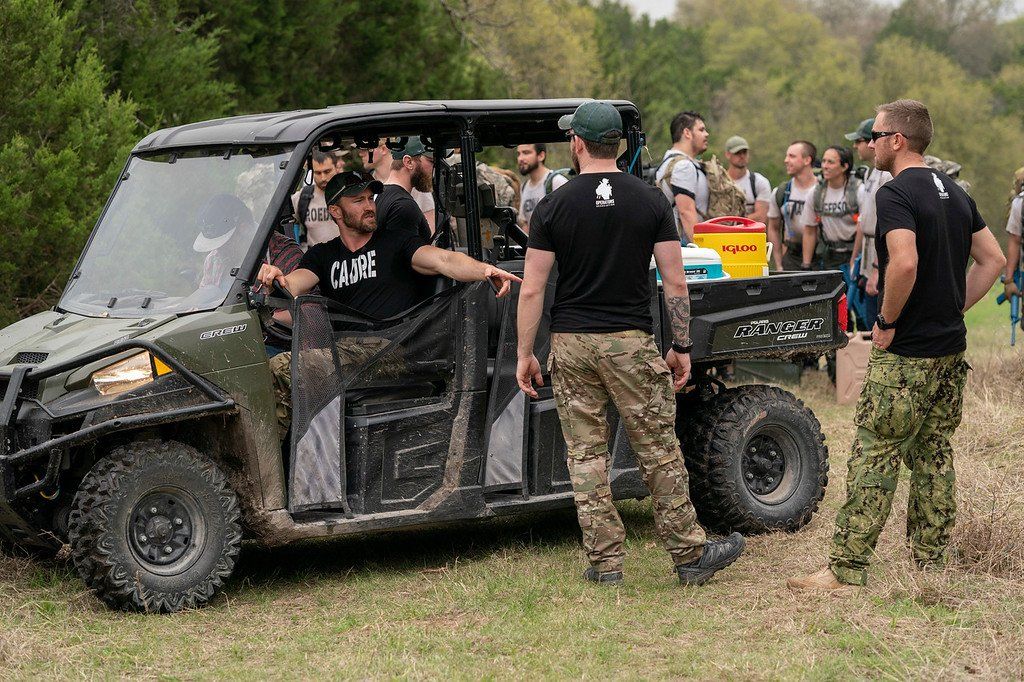
October 13, 2021
From rescuing hostages to delegating tasks on a team, negotiations are ubiquitous in daily life. When you become an operator, having the ability to achieve goals by influencing others is a skill that can save lives. In this OA communication guide, we’ll give you three powerful negotiating tactics that you can start using today. But first, we need to define what negotiation is, and more importantly, what it isn’t . What is Negotiating? At its core, negotiation is a dialogue between two people to reach a mutually beneficial outcome over a conflict. When many people think of negotiating, they imagine using sneaky tactics or strategies to bend others to their will. Despite this, negotiations in the civilian and military world are rarely about “getting one over” on someone. In reality, purposeful and productive negotiating boils down to one thing: Making both parties feel like they won. If you can accomplish this goal in your negotiations, you can get what you want while preserving relationships and keeping good faith. While it might be tempting to lie or use underhanded tactics to achieve strategic gains in the short term, this approach will almost always unravel violently at a later time and create more problems than it helped solve. Ethical negotiation isn’t just a nice thing to do – it’s crucial for your long-term success. Tactic 1: Time = Investment The first principle of negotiating is that the more effort a person invests into something, the more committed they will be to seeing it through. For example, imagine you want to buy a car. If you go to a dealership, have the salesperson show you a car for five minutes, and immediately start negotiating, chances are they won’t give you much leeway in terms of pricing. On the other hand, imagine you go to the dealership and make the salesperson give you a full three-hour tour of all the vehicles. He spends hours explaining every intricate detail of every automobile on the sales floor. Then, when you start negotiating, he’ll be much more likely to give you a big discount on the car. Why does this happen? Because people value their time. And they care about things proportionately to how much effort they’ve invested into them. When the salesperson only put five minutes into the tour, he didn’t invest much time and effort. Thus, he’s not worried about losing the sale. But if the salesperson spent hours of his time, skipped his lunch break, and answered countless dumb questions (which you strategically asked on purpose to prolong the tour), he is deeply invested in closing the sale. Once you start negotiating, he’d rather get something for his time rather than nothing at all. Understanding Sunk Cost The reason that this time investment leverage strategy works so well is that most people don’t understand the economic principle of sunk cost. A sunk cost is an investment or expense that has no opportunity for return in the future, so it shouldn’t be a factor in your decision-making. In the car sales analogy, even if the salesperson has invested hours of his time into you, he’ll never get that time back – whether or not he sells a car. No matter what happens, that time is permanently gone. Thus, it no longer matters and shouldn’t be a factor in his negotiations. Despite this, many people fail to identify a sunk cost; and that’s why this strategy works so well. Tactic 2: Make Them Say “No” If there’s one thing that people love, it’s saying the word ”NO.” It’s an explicitly simple, powerful phrase that can stop people in their tracks. For this reason, there’s a very potent connection between saying no and feeling in control of a situation. When a person says no, they subconsciously feel that they have set boundaries and become more comfortable with the negotiation. What does this mean for you? If you can get a person to say no and reject a request, they’ll put their guard down. This means that they are more likely to say yes to your next request. You might be starting to see where we’re going with this. You can increase your chances of people accepting your offer if you allow them to say no first. Thus, make a decoy – an unacceptable and easy-to-reject request. Allow them to say no, then follow up with your real demand. They’ll be much more likely to comply with your second offer for two reasons: First, they had the chance to say no, and feel powerful and in control because they set boundaries. Second, your genuine request seems much more palatable in contrast to your first, more egregious demand. Want someone to say yes? Start by making them say no. Tactic 3: The Law of Reciprocity Humans are hardwired to work together. Thousands of years ago, your ancestors’ abilities to collaborate with those around them could make the difference between life and death. As such, our brains operate on a powerful reciprocity system. In other words, when we get something from someone, we have a subconscious primal urge to return the favor. This is known as the Law of Reciprocity, and it’s a powerful tactic to use in negotiations. When a person asks you for something, you can use the Law of Reciprocity to get something in exchange. For example, if a coworker asks you to cover their shift on Monday, ask them if they’d be willing to cover two of your shifts in return. Although your request is double theirs, their collaborative survival instinct will make them more than happy to oblige. Business sales studies have shown that utilizing the Law of Reciprocity and making a counter-request immediately after someone asks you for something can boost compliance by up to 600%! Although the Law of Reciprocity is a powerful tool, you must be aware of its limitations. Specifically, that it has an expiry date . As time passes, the psychological pressure people feel from the Law of Reciprocity diminishes exponentially. In other words, the longer you wait to ask for something in return, the less likely you are to get it. For example, let’s go back to the coworker shift analogy to illustrate this point. If you ask them to cover two shifts immediately after they asked you for a favor, they’re likely to agree. But if you wait a year before asking them, they’re unlikely to feel a need to reciprocate you for your actions. In other words, if you want to apply the Law of Reciprocity in negotiation, you must do it immediately. Finding your tribe is crucial to your success as an aspiring SOF operator. When you surround yourself with people who will keep you accountable, you can stay on the path and overcome the training plateaus you’ll inevitably encounter. Become an OA aspiring operator today and join a growing community of future, current, and former SOF operators who will hold you accountable and help you improve. Visit our memberships page to learn more and get started today!
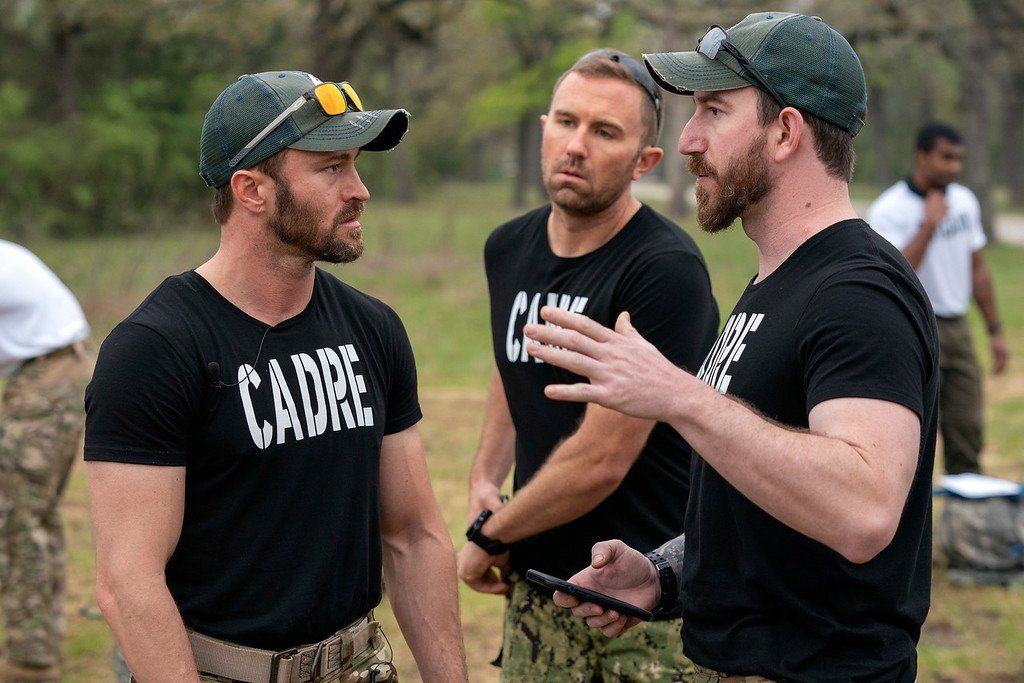
September 29, 2021
Rome wasn’t built in a day, and it also wasn’t built by a single guy with a shovel. Whether you’re trying to forge an empire or accomplish a mission, all great human endeavors have one thing in common: they require collaboration . Unfortunately, with teamwork comes a possibility of disagreements and opposing viewpoints. When problems arise, you must be prepared to evaluate a solution with your team while maintaining the group’s morale, integrity, and esprit de corps. This OA leadership guide is all about learning how to argue your ideas tactfully. The less friction you create while discussing the team’s issues, the more willing your teammates will be to help you overcome obstacles. Winning a debate means nothing if your group resents you for it. Strategy 1: Choose Your Battles Before you decide to engage in an argument, you must determine whether or not it’s necessary to do so. Egos can often cloud judgment and cause people to start unnecessary problems. The only time you should be engaging in an argument, even when you’re the team leader, is if you believe the team’s decision will cause harm to the mission. If the purpose of a potential argument would be inconsequential to the group’s goal, do not engage. People tend to be poor at hiding the intent behind their actions – if your teammates sense that you are starting an argument for the sake of arguing, or that you are trying to “establish your dominance,” they will immediately lose respect for your leadership. Engage strategically and avoid unnecessary conflict . Strategy 2: Don’t Get Personal One of the worst mistakes you can make during a debate is performing an ad hominem attack. This occurs when you attack an individual instead of an argument. Take this exchange for example: Person 1: “We should establish a position at the top of the hill.” Person 2: “I believe we should stay in the valley instead.” Person 1: “You should worry about growing a brain stem before you worry about talking.” Although this is an extreme example, it’s clear that Person 1 is more interested in “winning” the argument than finding a strategic solution. Even if they are correct, their behavior will erode any respect their teammates may have for them. When you’re debating possible courses of action with your group, there is no victory in being correct – the sole measure of an argument’s success is how effectively you find a solution. Strategy 3: Be Precise Precision isn’t just a necessity for creating achievable goals, it’s also a crucial aspect of having your ideas taken seriously during a debate. While some hyperbole can help you illustrate a point, constant exaggeration makes your ideas seem unfounded and misguided. When you’re arguing, try to make your key points as concise and specific as possible. This has several benefits: Firstly, simple information is easier to remember and process than protracted statements. Concise arguments are also more difficult to misrepresent if your adversary wants to twist your words. Finally, you’ll be better able to segment and keep track of the points you’ve made, which helps you avoid making redundant arguments or accidentally countering your own ideas. Simplicity is the core of debate – use hyperbole conservatively. Strategy 4: Stay Humble, You Might Be Wrong If you think you’re wrong, you (hopefully) aren’t arguing in the first place. But just because you believe that your ideas are right in your mind doesn’t mean that they are correct in reality. In fact, unless you’re arguing the laws of physics or basic math, you will seldom find yourself in a debate where your point of view is irrefutable. With that in mind, here are a few common logical fallacies that you should be careful to avoid during your debates. Straw Man Fallacy The straw man fallacy is similar to the ad hominem attack in that it changes targets and ignores the primary argument. A straw man fallacy occurs when instead of tackling the debate subject, you challenge an exaggerated and indefensible facet of the problem that your opponent wasn’t arguing for in the first place. Person 1: “We should put solar panels on our house.” Person 2: “But if everyone puts solar panels on their house, the oil industry will fall apart and people will lose jobs!” Causal Fallacy The causal fallacy operates on the belief that correlation equals causation. Oftentimes, it’s easy to forget that just because two events seem related, that doesn’t necessarily mean that one causes the other. Although the following example is extreme, causal fallacies still commonly occur in science and medicine (for example, they are responsible for the myth that childhood vaccinations cause autism): “I eat dinner before sunset every single day. Therefore, eating dinner causes the sun to set.” Appeal to Authority An appeal to authority fallacy is when you overuse an authority figure as evidence for your argument. While experts, doctors, researchers, etc., can often provide invaluable evidence and shed light on an idea, overstating or overvaluing their opinions is a common debate fallacy. Just because someone is in a position of power or has experience doing something, that doesn’t mean everything they say is infallible. “My uncle owns a gym, and he says that ALL bodybuilders use steroids. So that must be true!” Moving the Goalposts Finally, moving the goalposts is more of a dirty debate tactic than a fallacy. Simply put, this occurs when you dismiss valid evidence for your adversary’s argument and demand more or different types of proof. When the other person takes a metaphorical shot on target, you move the goalposts instead of defending. Moving the goalposts often occurs when a person is backed into a corner and knows that their argument is wrong but is determined to keep fighting. If you can feel your ego aching during a debate, it might be time to throw in the towel. Person 1: “You don’t get to tell me what to do because you don’t have experience in this line of business.” Person 2: “Actually, I’ve worked in this industry for five years.” Person 1: “Well you need six years of experience to tell me what to do!” Learning how to argue your points productively takes time. In the past, “ conversationalism ” was considered a skill that people would train the same way they would practice playing musical instruments. In other words, if you want to get good at applying the techniques in this OA guide, you must keep them in mind and practice them during your daily conversations! If you’re looking for more ways to develop your leadership skills, become an OA Aspiring Operator today. You will unlock instant access to hundreds of exclusive special forces podcasts, a private weekly accountability group, and a community of over 900 motivated, disciplined future operators who will keep you accountable for your progress. Visit our membership packages page to get started today!

September 15, 2021
Nobody ever wants to get stuck in an SHTF (Shit Hits the Fan) situation. But in the event that you and your family, friends, or team encounter a chaotic scenario, you must be prepared to lead them to safety. Whether or not you’re a SOF operator yet, there’s a good chance that your training and mindset make you the best candidate for taking charge of the situation. When SOF operators encounter chaotic or SHTF situations, they have a simple process that helps them refocus, prioritize, delegate, and lead their team to victory. In this OA guide, we’ll show you the four steps to leading your team in a chaotic scenario. Step 1: Stop and Think This may sound like a counterintuitive action to take in a turbulent scenario, but unless your life is in immediate danger, one of the best things you can do is simply stop. Taking a moment to look around, focus, and comprehend your environment will significantly increase your situational awareness and decision-making abilities. When SOF snipers are in a high-stress situation, they have a four-step process called the SLLS Technique that helps them calm down and do their job effectively. SLLS stands for Stop, Look, Listen, Smell. It’s all about activating your senses and getting rid of the tunnel vision easily caused by chaotic situations. Detaching from the emergent situation – if only briefly – can give you a new perspective on the problem that you might not have considered had you started acting immediately. Step 2: Identify Objectives When you’ve surveyed your situation, the next step is identifying the objectives you must accomplish to achieve your goals. It’s crucial to note that the objectives you set in an SHTF scenario aren't the same ones you’d set when planning a mission . In a chaotic situation, you must create simple, short-term mini-objectives. By setting small objectives like “Get across the street,” you maximize your planning while minimizing the time you waste on building a protracted strategy. Mini-objectives are also easier to follow and can usually be performed by all members of your team. For example, the instruction “Perform first-aid” might be overwhelming for an inexperienced individual. But almost anyone can follow the command to put pressure on a wound. Simplicity is the key to success. Setting simple mini-objectives is also crucial to executing the next step in this guide. Step 3: Decentralize Command If you’ve successfully identified and set mini-objectives, it's time to decentralize your command. In an SHTF scenario, it’s easy to micromanage and try to do everything yourself. Although the people around you might not be as capable as you are, multiple individuals working together are almost always more efficient than a single person. Identify the strengths and weaknesses of those around you and delegate tasks accordingly. Decentralizing your command lets you focus more on the most crucial aspects of your plan while letting others handle work on the periphery. Step 4: Move or Die If you read OA guides often, you’ll know that we’re always talking about being aggressive and seizing the initiative in every situation. That’s because attacking a challenge is almost always better than waiting for it to hit you. When you attack, you have the predator’s mindset – you’re ready to smash through the enemy. When you take the defensive stance and brace for impact, you’re doing nothing but waiting for the worst. Whether your obstacle is material or abstract, attacking is almost always the superior decision. Find your tribe. The performance of the people around you will often determine whether you thrive or fail in a chaotic scenario. Having a team of a few warriors is much better than being surrounded by incapable people. That’s why finding a community of winners is so critical if you want to be a SOF operator. We created OA to help people like you achieve your goals and get the guidance you need to succeed. When you become an Aspiring Operator, you join hundreds of current, future, and retired SOF operators who will help you improve and keep you accountable for your performance. You also get immediate access to hundreds of exclusive podcasts, livestreams, and message boards where you can get the answers to all of your SOF pathway questions. Browse our membership packages to find your tribe today.

September 8, 2021
Life as a Green Beret isn’t just close action missions and elite military operations. A large part of a Green Berets job on deployment is to embed within the local culture and live among the people. By embedding into a culture, they can pick up on vital intelligence, observe potential enemy movements, and act as the first line of defense by employing unconventional warfare. Green Berets aren’t just exceptional warriors. They are also excellent communicators, bilingual, and experts at using and maintaining the latest military technologies. While Green Berets are elite special forces operators, embedding into a (potentially hostile) village beyond the safety of barbed wire and concrete leaves them vulnerable. If locals alert the enemy of a Green Beret team’s presence , they could be ambushed at a moment’s notice. With that being the case, one of a Green Beret’s greatest assets is his ability to build rapport with others. The better a Green Beret can communicate and form relationships with the locals, the better he can operate and carry out his mission. In this OA guide, we’ll show you the three principles behind how US Army Green Berets build rapport, and how you can apply these tactics to your daily life. Principle 1: Have Excellent Cultural Awareness Although Green Berets deploy all around the globe, one thing is true almost anywhere they embed: they are trying to fit into a foreign culture. As such, Green Berets must be masters at observing how people behave and understanding the culture in which they embed. Failing to adopt the cultural norms during their deployment can cause a Green Beret to lose rapport with the locals and put his life at risk. For example, even small things that are normal in America – like shaking a married woman’s hand – can have significant repercussions in an Afghan village. To ensure that they can embed effectively into a culture, Green Berets take the time to memorize and understand the local norms and accepted behaviors. The better a Green Beret can blend into the local culture, the more rapport he can build while keeping a low profile. While you likely aren’t dealing with people from around the world regularly, you can still build stronger relationships by having a strong cultural understanding. You must understand that behaviors you and your friends might find ordinary can make people outside your group uncomfortable. This is especially true in the business world, where different companies will have significantly varying approaches to how their workers interact with each other. If you’re unaware of a culture that you’ve just joined, your best bet will be to keep quiet, observe, and not speak unless spoken to or it is absolutely necessary. Accidentally branding yourself as an ignorant loudmouth will cripple your chances of making a good first impression or building long-term relationships. When in doubt, tread lightly. Principle 2: Show You Care Green Berets often depend on the cooperation of the locals to accomplish their mission. When a Green Beret builds strong relationships with the people in his embedded culture, they are more likely to collaborate with him and reveal crucial information about enemy activities. To do this, Green Berets must build trust with the locals by showing them that they care about more than just accomplishing their mission (even if that’s not entirely true). A crucial part of building rapport is showing people that you aren’t just working with them to accomplish an objective . You must show your teammates that you are genuinely interested in their progress and goals. The best way to do this is to regularly have 1-on-1 discussions with your people where you don’t just talk about the bottom line. Instead, chat with them about their goals, personal progress, interests/hobbies, or simply ask them how their weekend went. People love to talk about themselves, so allow them to do so with you. After having a couple of casual, personal conversations with an individual, they will be much more willing to share information that they would have otherwise kept to themselves. Principle 3: Subtly Mirror Others This final principle directly appeals to an individual’s subconscious mind. It can be challenging to get the hang of it, but once you do, you can create excellent rapport with people you barely know. Commonly known as the Mirroring Technique, mirroring is the practice of subtly copying another person’s vocal tone, body language, and behaviors. Humans do this subconsciously when interacting with a person they like or are attracted to, but you can also do this purposefully to speed up your rapport building. The next time you meet someone new, try to subtly copy their behavior. If they are a soft-spoken individual, speak with a lower, calmer tone. If they are a particularly energetic and outgoing person, match their enthusiasm. Human beings are naturally attracted to things they find familiar and repulsed by things they find foreign. In other words, they like people who are similar to themselves and dislike those who are different. By mirroring a person’s mannerisms, you tell their subconscious mind that you are a similar, trustworthy person! This psychology technique can work wonders for helping you establish rapport and build trust in record time. If you’re looking for more ways to develop your leadership skills, become an OA Aspiring Operator today. You will unlock instant access to hundreds of exclusive special forces podcasts, a private weekly accountability group, and a community of hundreds of motivated, disciplined future operators who will keep you accountable for your progress. Visit our membership packages page to get started today !
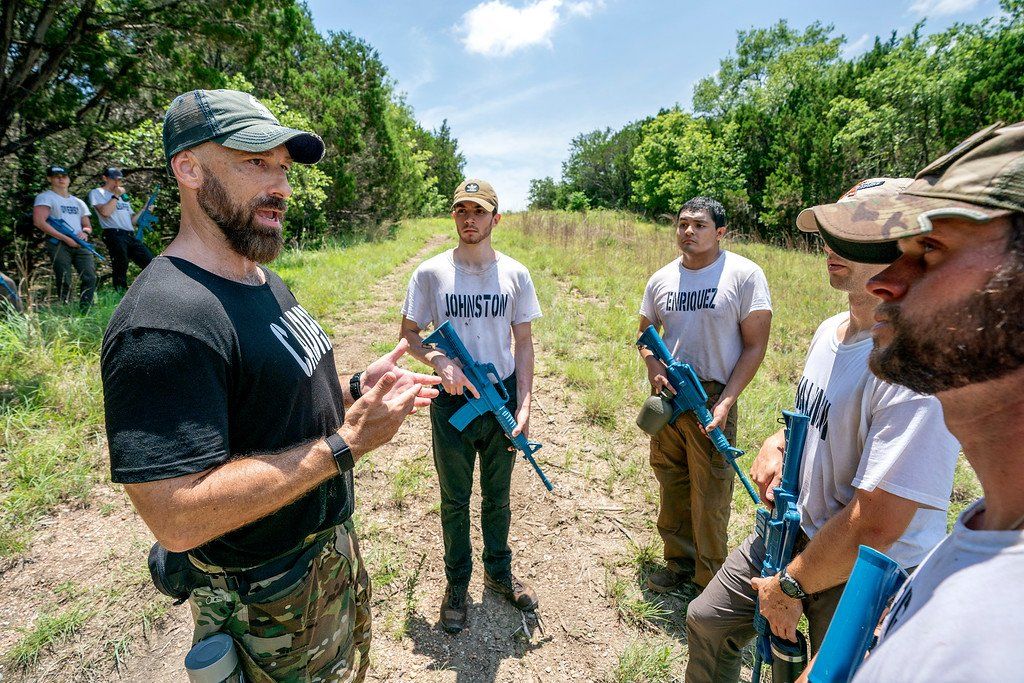
September 1, 2021
Whether you’re in the military or civilian world, having excellent leadership skills usually makes the difference between success and failure. Nobody gets through life without getting some help along the way. If you can’t guide and inspire the people around you, you’ll have a difficult time accomplishing anything significant. That’s why we release weekly OA leadership guides to help you sharpen your skills and overcome obstacles. So far, we’ve gone over everything from how to plan a mission to the different styles of leadership . What we haven’t touched on until now is how to deal with leading a seemingly unmanageable group. What can you do if your teammates are uninspired, insubordinate, or unwilling to do their jobs? In this OA leadership guide, we’ll give you four tactics for leading troublesome groups to success. It’s Always the Leader’s Fault Before you can start using leadership tactics to manage your troublesome group, you must diagnose the root cause of your problem. When your people are consistently absent, unproductive, undisciplined, etc., there is almost always a bigger reason behind the issue. If a single individual is constantly underperforming, they might simply be the wrong person for the job. But if the group as a whole is consistently failing, you must find the root of the problem. Pay attention to your people and communicate with them often. Try to discover negative behavioral patterns that appear often within the group. Oftentimes, teams don’t fail because they want to fail. It happens for one of three reasons: They don’t understand the objective/plan They don’t agree with the objective/plan They don’t trust/respect you as a leader All of these cases have one thing in common: they are caused by a lack of leadership. The first step to managing a problematic group is realizing that the problem is likely rooted in your leadership skills. The first thing you must do when leading a difficult team is show your capabilities as a leader and ensure that everyone is on the same page. If there are problems (there will be), address them immediately. Place Progress Over Ego When dealing with problematic teams and individuals, it’s easy to take their insubordination and inefficacy personally. When this happens, it’s critical to remember that your status as a leader and your value as a person are two separate things. Oftentimes, if you feel that one of your teammates is trying to undercut your authority as a leader, you’ll want to “put them in their place.” This includes trying to prove them wrong, demoting them, or purposefully causing them to fail their tasks. Resist the urge to do this – you’ll only hurt the team in the long term. Counter-intuitively, the best thing to do in this situation is to take the opposite approach: give the underperformer more responsibilities. For example, if you have a person who constantly shuts down your plans and ideas, put them in charge of planning. Again, don’t do this to put the person in their place – do it with a genuine intention to help the team. When you put the problematic individual in charge of planning, one of two things will happen. Either 1) They’ll realize it’s not that easy to plan and relinquish leadership back to you (WIN), or 2) They come up with an excellent plan that helps the team succeed (WIN). When you put progress over ego, you can facilitate win-win situations that genuinely help your team instead of only serving to establish your dominance in the group. To learn more about keeping your self-importance in check, click here to find out How to Control Your Ego . Criticize Behavior, Not Individuals Tying into the previous strategy, one of the biggest mistakes you can make as a leader is using ad hominem attacks when criticizing your team’s performance. An ad hominem attack is when you criticize a person's integrity and personality rather than the problem you're facing. In essence, you attack the person instead of the issue. Although ad hominem attacks are often used by professional athletes to get under their opponent’s skin, they never lead to a productive conversation. When trying to critique your team’s performance, never resort to ad hominem attacks – they make your people lose respect for you and kill any progress you might have made as a leader. The best way to avoid engaging in ad hominem attacks is to pay close attention to how you phrase your criticisms. Avoid using direct nouns (like "you") when addressing your people, and opt for more indirect language. For example, suppose you have an individual who consistently shows up late and misses deadlines. You could say, “you are always late because you’re irresponsible and you don't care about the team,” but this will only make your teammate defensive and unwilling to take criticism. Instead, a better approach would be to focus on the problem and collaborate with the problematic individual to find a solution, “I noticed that you’ve been showing up late these past few days. Is there anything I can do to help you get here on time? The team needs you.” Although this example still uses the word “you”, it conveys the same message of “don’t be late” in a way that’s productive and puts you and the problematic individual on the same team. The next time you need to criticize a teammate’s performance or behavior, approach it from the angle of being a collaborative problem solver, not a disciplinarian. Set Clear Boundaries and Expectations Oftentimes, when your teammates cross behavioral boundaries and act disrespectful, they aren’t aware that they crossed the line. The more you work with a group of people, the more they’ll start seeing you as a leader as their equal (especially if you are similar in age or experience). That’s why setting clear boundaries and expectations is crucial as a leader. When you first take charge of a team, put time aside as soon as possible to meet with your group and explain the behavior and performance expectations for the team. These boundaries should be clear, well-defined, and, most importantly, fair. Every individual on the team – including yourself – must be subject to the same expectations and disciplinary actions. If your teammates aren’t allowed to discuss certain subjects on the job (like religion or politics), you aren’t allowed to either. The sooner you can set and begin enforcing boundaries, the more control you’ll have over how the group operates. Depending on the complexity of your mission, setting boundaries and expectations can be as simple as having a 5-minute briefing with your team or as complex as outlining SOPs for different tasks. Regardless of how you approach the situation, one thing will decide whether or not your teammates abide by these boundaries: discipline. No matter what you do in life, being disciplined makes you more effective , adaptable, and resilient. Without discipline, you won’t have the commitment it takes to experience long-term growth and lead your team to success. If you are on the SOF pathway, improving your discipline will put you far ahead of other candidates during selection. Learn more ways to improve, stay accountable, and build discipline. Become an OA Aspiring Operator today and join our 900+ member community of existing and future operators! You'll get instant access to exclusive podcasts, a weekly accountability group, and a huge community of driven individuals who will help you stay on the path.
